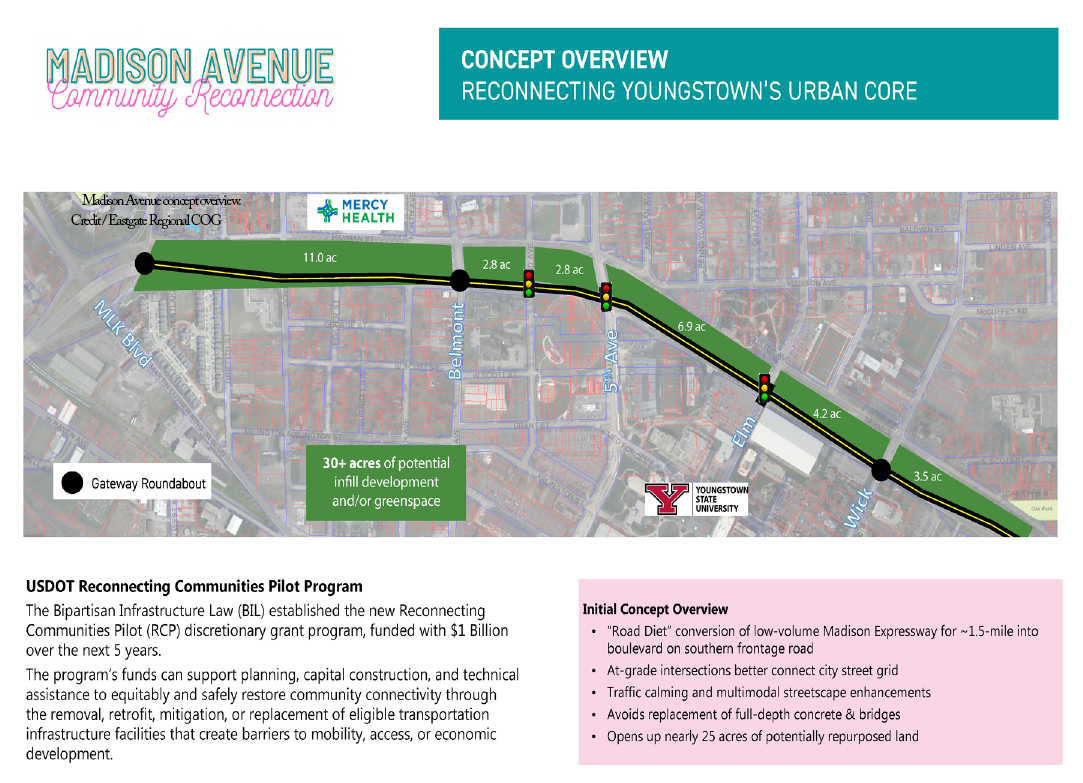History and Context
In the 1960’s, the Madison Avenue Expressway was built as a trenched limited access freeway that created an imposing physical barrier, especially for pedestrians. The construction split the original neighborhood in half which severed community connectivity and led the area’s population to decline almost immediately as a large number of homes were demolished to make way for the new expressway and many residents moved to outlying suburbs.
Proposal
The potential of highway removal was first identified in a 2020 study by the Eastgate Regional Council of Governments Belmont Avenue Corridor Plan. The Belmont Avenue Corridor Plan hosted two conversational public engagement opportunities where residents, business owners, and stakeholders from the project area were able to convey their concerns and ideas for improvement. This long term and likely expensive effort would serve to reconnect the neighborhoods that it has severed by converting the expressway from a large 4 lane divided highway to a 3 or 4 lane surface street. The Corridor Plan was presented to and approved by Eastgate’s General Policy Board, Technical Advisory Committee, and Citizens Advisory Board.
Conceptual planning is underway on the conversion of a 1.5-mile section of Madison Avenue Expressway into a low-speed boulevard with complete streets (bike, pedestrian, transit) facilities integrated into the city’s street grid. The proposed concept would involve reconfiguring the high-speed freeway trench onto the southern frontage road through traffic calming, gateway roundabouts, and a “road diet.” The project would open up over 30 acres of unneeded freeway space to be repurposed as a potential greenspace, university and healthcare campus expansions, and infill mixed-use redevelopment.

Current Plans
With the announcement of the U.S. Department of Transportation’s Reconnecting Communities Pilot Program, the Eastgate Regional Council of Governments is in the process of exploring the feasibility of the removal of the Madison Avenue Expressway by building a coalition within the community, the City of Youngstown, and the Ohio Department of Transportation. These stakeholders all support the removal of the Madison Avenue Expressway at this location and Eastgate applied for a Reconnecting Communities planning grant to refine the conceptual alternative.



















